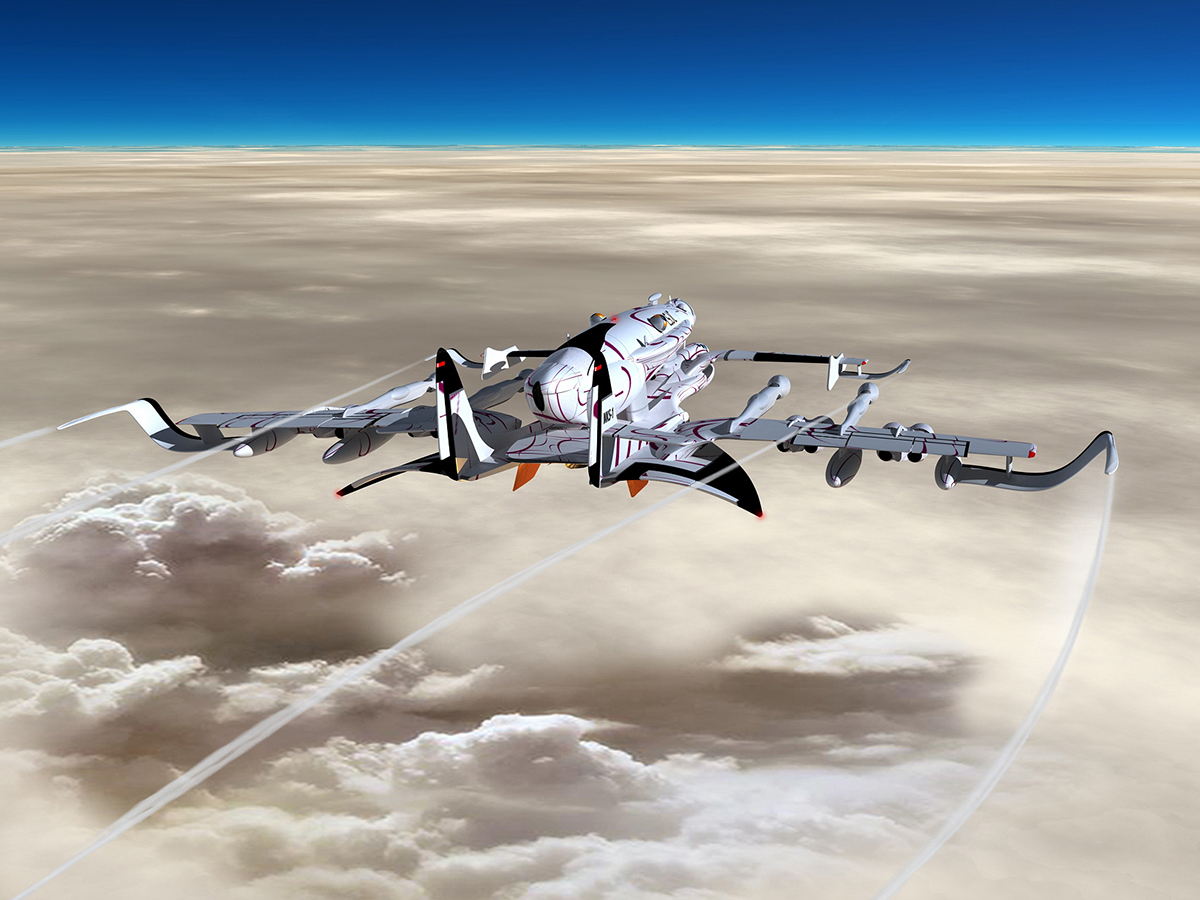
Once in space, the biggest threat to astronauts and spacecrafts is space debris. Space debris, also known as space junk or space waste, are potentially dangerous and useless objects in Earth’s orbit.
Therefore, NASA's or ESA's Space Agencies... today are developing systems to clean up space debris from Earth’s low orbit (73% of tracked debris reside in this orbit).
Since it is not economically feasible for a spacecraft to pick up all the pieces of space junk;we need other "possible" solutions; my design is based in a "personal study" with most potential feasible solutions; it could consist to use the laser technology that could vaporize or redirect
space debris back to Earth. The project are based in today tested technology and technology under development.
MKS-1B LSJC
The project consists in the feasible posibility to move a mass in Space at our discretion, redirecting it in a reentry orbit at high speed, so "the mass" will be destroyed in this process or in specific cases (according to size or composition) it will fall in a preselected point in the ocean (without damaging any living being, at any time).Based in theorized rudiments of Quantum Electrodynamics and other "commons energies" like an Ultra intense Pulse Laser and Quantum emission processes, discovered by A. Einstein, who derived the relationship between the A coefficient describing spontaneous emission and the B coefficient which applies to absorption and stimulated emission (Principles of Laser Actions).
The project consists in the feasible posibility to move a mass in Space at our discretion, redirecting it in a reentry orbit at high speed, so "the mass" will be destroyed in this process or in specific cases (according to size or composition) it will fall in a preselected point in the ocean (without damaging any living being, at any time).Based in theorized rudiments of Quantum Electrodynamics and other "commons energies" like an Ultra intense Pulse Laser and Quantum emission processes, discovered by A. Einstein, who derived the relationship between the A coefficient describing spontaneous emission and the B coefficient which applies to absorption and stimulated emission (Principles of Laser Actions).
Helios -would be an airplane equipped with a High-Powered Chemical Laser Unit ( Deuterium fluoride laser Advanced ), a Cooler System for Laser Unit and a Wind Electric-Generator like a power booster- it could generate an Ultra intense Pulse Laser from Front Turret, the heat from the laser blasts would vaporize a minuscule part of a piece of Space Junk between 1cm to 20cm resulting in a "plasma cloud" around it. The two Lateral Turrets generate a Pulse Laser at lowering rate with high repetiton rate, directed to a Satellite in LEO orbit (Cyclops) area for most Space Debris. Helios could be equipped with some Tracking & Detection Systems of Space Debris with Land Support (Special Telescope).
Cyclops could recive the Pulse Laser from lateral turrets redirecting its to preselected objectives, -Hypothetically Cyclops could generate an electromagnetic "mass" following Quantum Electrodynamics bases, combined with superconductive nano-particles at high temperature and solar wind like a "accelerant"(ions, x radiations, neutrines, UV radiations,etc...) and Pulse laser like a transmitter (rail way) towards "plasma cloud" mass of Space debris (with semi-electric charge), the masses will have an electromagnetic interaction, so the nano-particles and the Debris would be pushed in a Fall Orbit .
Helios & Cyclops could "clean" big extensions into space at LEO orbit (low earth orbit) between 300km at 1,000km from Earth's surface in relatively short periods of time (hours).
Cyclops could recive the Pulse Laser from lateral turrets redirecting its to preselected objectives, -Hypothetically Cyclops could generate an electromagnetic "mass" following Quantum Electrodynamics bases, combined with superconductive nano-particles at high temperature and solar wind like a "accelerant"(ions, x radiations, neutrines, UV radiations,etc...) and Pulse laser like a transmitter (rail way) towards "plasma cloud" mass of Space debris (with semi-electric charge), the masses will have an electromagnetic interaction, so the nano-particles and the Debris would be pushed in a Fall Orbit .
Helios & Cyclops could "clean" big extensions into space at LEO orbit (low earth orbit) between 300km at 1,000km from Earth's surface in relatively short periods of time (hours).


























Hypothetic sucession

